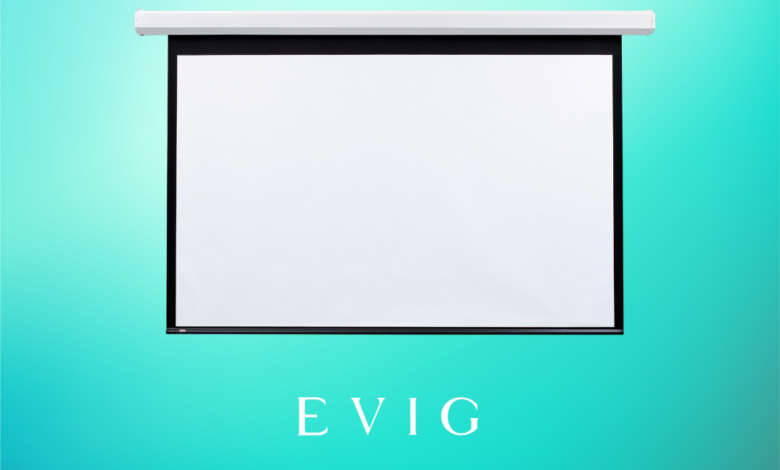Transform Your Venue with a Seamless Remote Projector Screen Reveal

It doesn’t matter if it’s a big meeting room, a school hall, or even a prayer space—people always notice the screen. If it’s hanging awkwardly or looks out of place, it throws off the whole room. But when the screen stays hidden until you need it, comes down smoothly, and looks clean, it makes the space feel well put together and more professional.
That’s where a Draper projector screen like the Ultimate Access XL E can make a big difference. It hides in the ceiling when not in use, and opens up only when you want it. Clean, simple, and very smart.
What’s a Remote Projector Screen, Anyway?
Let’s keep it simple. A remote projector screen is a screen that you can control with a wall switch or a remote. No cords to pull, no climbing up on chairs to adjust anything. Just press a button, and the screen rolls down smoothly.
With the Ultimate Access XL E, there’s even a trapdoor that opens on its own to let the screen out. When you’re done, the screen goes back up, and the door shuts tight. No parts sticking out. No mess.
A Great Fit for Big Rooms
This screen is for big venues. Think of places like large classrooms, hotels, churches, or town halls. It can go up to 22 feet wide, which is more than enough for large groups to see clearly. If you need a different size, Draper also makes custom widths to fit your space.
Whether it’s a presentation or a video, everyone in the room gets a clear view—front row or back.
Clean Look, Even When It’s Off
One thing people like about this setup is that the screen stays hidden when not in use. The case sits flat inside the ceiling. The small panel that opens when the screen drops can even be painted to match your ceiling, so it blends in entirely.
No wires hanging. No screen is blocking the lights. It’s just a clean ceiling when nothing’s playing—and a big, clear screen when it’s time to show something.
Built for Easy Use
The motor inside this remote projector screen is quiet and smooth. You get a simple wall switch that lets you roll the screen up or down. If you want to use it with your AV system or a remote, that’s also possible.
During setup, the screen is added after the ceiling work is done. This keeps it safe from dust or paint. The top brackets can slide to help adjust the position without cutting or forcing the case to fit.
What to Expect During Setup
Here’s how the setup usually works:
- The main screen case is installed early, during the building phase.
- The ceiling is finished around it.
- The screen is added last, so it stays clean and safe.
- The trapdoor panel is fixed in place and can be painted to match your ceiling.
You won’t need to remove tiles or open up the ceiling later. The service panel is right at the bottom for any future checks or cleaning.
Keeping It in Good Shape
Just like anything used in public spaces, you must look after the screen. Here are a few simple tips:
- Roll it up when not in use to keep the fabric clean.
- Wipe the outer case gently with a damp cloth.
- Once a year, open the access panel to check the motor and cables.
- Don’t use strong cleaners—they might damage the finish.
With basic care, your screen can last for years without problems.
Who Is This Screen Best For?
This kind of screen works great in places like:
- Large conference rooms and ballrooms
- Lecture halls and universities
- Churches, mosques, and temples
- High-end home theaters
- Hotels and event centers
If your space needs a big screen that stays out of sight when not in use, this is a solid choice.
Final Thought
If you want your space to feel tidy, modern, and easy to use, the Draper projector screen with remote control is a smart option. It gives you a smooth screen reveal, keeps the ceiling clean, and works with just a press of a button.
A remote projector screen like this doesn’t just show a picture—it helps the whole room look and feel better. And in busy places where things need to work quickly and look good all the time, that matters.




